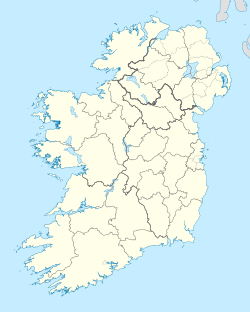The Bogside is a neighbourhood outside the city walls of Derry, Northern Ireland. The large gable-wall murals by the Bogside Artists, Free Derry Corner and the Gasyard Féile (an annual music and arts festival held in a former gasyard) are popular tourist attractions. The Bogside is a majority Catholic/Irish republican area, and shares a border with the Protestant/Ulster loyalist enclave of the Fountain.
YouTube Encyclopedic
-
1/3Views:8121 726265 919
-
Who ARE The Bogside Artists of Derry?
-
Bogside Volunteers
-
Over 3 Hours Of Irish Rebel Songs - Various Artists
Transcription
History
The Troubles
The area has been a focus point for many of the events of the Troubles; in 1969, a fierce three-day battle against the RUC and local Protestants—known as the Battle of the Bogside—became a starting point of the Troubles. Between 1969 and 1972, the area along with the Creggan and other Catholic areas became a no-go area for the British Army and police. Both the Official and Provisional IRA openly patrolled the area and local residents often paid subscriptions to both. On 30 January 1972, a march organised by the Northern Ireland Civil Rights Association against internment that was put into effect the year before turned into a bloodbath known as Bloody Sunday. The British Parachute Regiment shot dead 14 protesters and injured 14 more; this resulted in a large surge of recruitment for both wings of the IRA in the city. After Operation Motorman and the end of Free Derry and other no-go areas in Northern Ireland, the Bogside along with the majority of the city experienced frequent street riots and sectarian conflict lasting all the way to the early 1990s. In 1974, the Official IRA declared an end to their armed campaign, with hardline volunteers on the ground already angry about the ceasefire in mid 1972. In result, Seamus Costello and other socialist militants formed the Irish Republican Socialist Movement. This new movement included the Irish National Liberation Army, the paramilitary wing of the IRSM. Derry and particularly the Bogside became one of many strongholds for the INLA; in fact all three volunteers who died in the 1981 Irish hunger strike were from Derry or County Londonderry. The Irish People's Liberation Organisation, a breakaway group of the INLA, made a small but effective presence in Derry. It engaged in a feud with the INLA in the city along with other areas in Ireland from 1987 to 1992. The feud ended with the Provisionals stepping in and killing the main Belfast leadership while letting the rest of the organisation dissolve in the rest of Ireland. Throughout the rest of the 1990s, the Bogside became relatively peaceful compared to other localities[citation needed] of Northern Ireland at that time such as Belfast, even though street riots were still frequent.
-
The Bogside, looking down from the entrance to the city walls
-
Bloody Sunday Memorial
-
Westland Street in the Bogside, viewed from the city wall (31 July 2007)
See also
External links
- Museum of Free Derry - History of the Bogside
- Bogside Murals
- Battle of the Bogside
- Bogside & Brandywell Initiative








